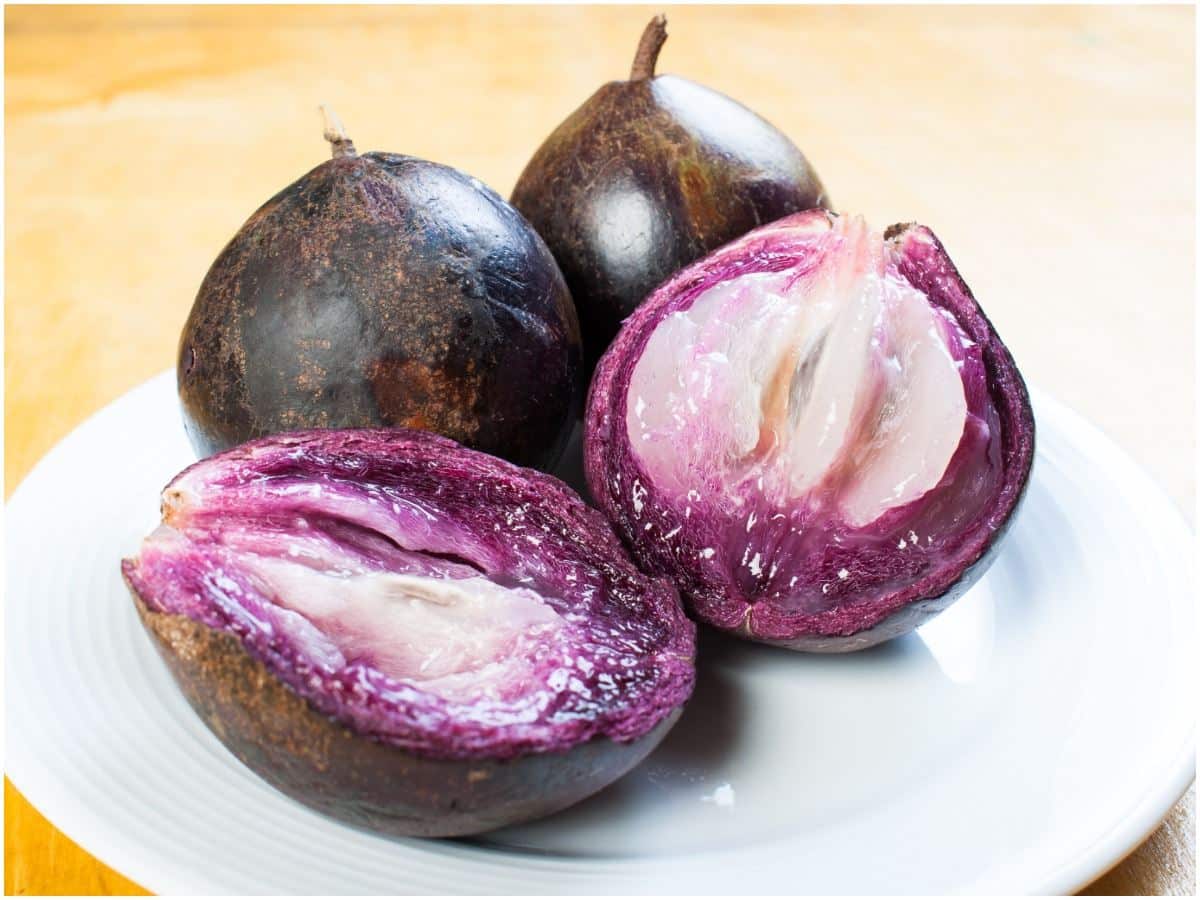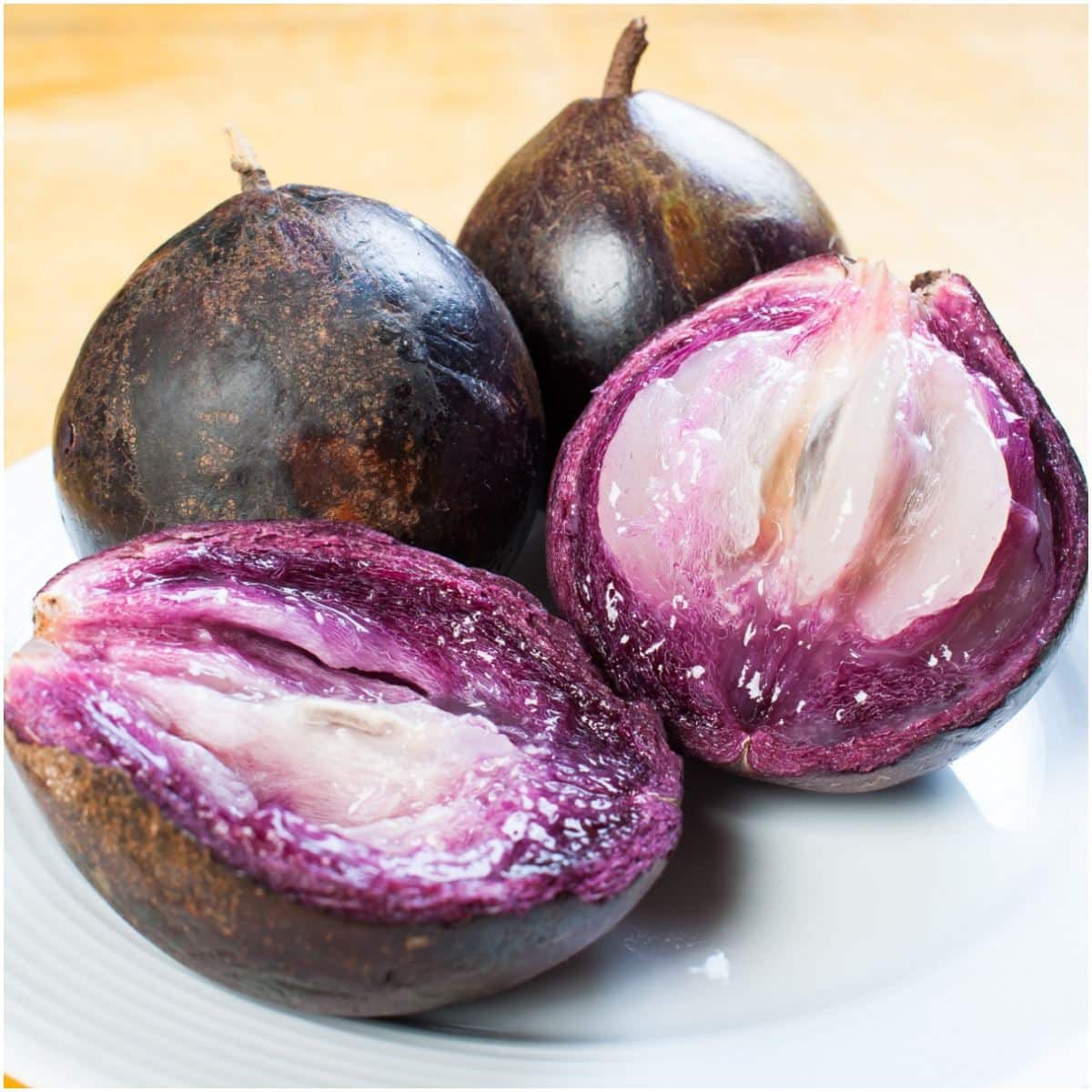What are the health benefits and side effects of star apple?
Introduction
Star apple, also known as caimito, is not the typical apple you’d find in your local grocery store. In fact — apart from its shape — it’s not an apple in the slightest.
Named for its star-burst core, this purple fruit has a creamy, jelly-like flesh and a taste so unique and sweet your taste buds won’t know what hit them when you take your first bite.
Common in Latin America, star apples thrive in warm climates but can also be found in limited supply around the United States, such as in Hawai’i and Florida.
Enjoy by the spoonful or add to a chilled drink on a hot summer night, star apple has something for everyone with a sweet tooth to enjoy — as well as several health benefits.
Let’s take a look at what you can gain from incorporating this tropical fruit into your diet.
Health Benefits
1. Rich In Iron
Compared to other edible fruits, star apple’s pulp is rich in iron and ascorbic acid, i.e., vitamin C, which enhances the absorption of iron from plant foods.
It also helps heal wounds and supports the immune system.
This is an attractive fruit for those who are anemic — a condition where one lacks healthy red blood cell production — as iron helps to produce hemoglobin, a protein found in red blood cells that carries oxygen throughout the body.
Moreover, eating foods high in iron, such as star apple, can correct anemia.
2. Aids Digestion
Star apple aids digestion as it’s high in dietary fiber, i.e., carbohydrates that can’t break down into sugar, and pass through the body undigested, effectively promoting bowel movements, eliminating stool, and preventing constipation and bloating.
And because fiber slows digestion, star apple, in turn, can lower blood sugar levels, making it an appropriate food for diabetes prevention.
Additionally, star apple has antimicrobial properties which may help to balance the gut’s microbiome and has the potential to be an alternative medicine for treating bacterial infections.
3. High In Vitamin C
Are you tired of getting your daily dose of vitamin C from citrus fruits?
Consider trying star apple as it’s packed with this antioxidant and is just as nutritious. Moreover, vitamin C:
- Helps form collagen, cartilage, and muscles in bones
- Is vital to the body’s healing process
- Absorbs and stores iron
- Protects cells from free radicals, i.e., molecules produced when exposed to UV rays, pollution, or tobacco smoke which contribute to cancer and heart disease
4. Fights Cancer Cell Overgrowth
Although more research is needed, current findings suggest star apple may be effective at stopping the growth of osteosarcoma, i.e., cancerous cells that form in bones.
This is due to star apple’s high phenolic and antioxidant content. Osteosarcoma also shows resistance to chemotherapy, meaning there may be a day in the future when star apple is included in cancer treatments.
5. Supports Bones
Star apple is rich in phosphorus and calcium, minerals imperative in maintaining healthy bones and strong teeth, as well as vitamin C.
Bones absorb calcium with the assistance of vitamin C, an antioxidant that not only helps produce collagen but also eliminates free radicals detrimental to bone health.
Moreover, studies show a positive relationship between vitamin C and bone health, indicated by improved bone mineral density and fracture probability.
5. Promotes Heart Health
Hidden away in the pulp of star apple is a high concentration of cardiac glycoside, a plant-derived substance that helps the heart beat efficiently by providing more oxygen to the blood and giving nutrients to the body.
Additionally, cardiac glycoside is used to reduce blood pressure and to treat heart failure and arrhythmia.
Thus, eating this fruit may help maintain cardiovascular health.
6. Abundant In Antioxidants
If you’re wondering how you can add more antioxidants to your diet, eating star apples is an effective way to do so.
They are rich in polyphenolic antioxidants — such as catechin and quercetin — which work to prevent or reverse damage from aging and free radicals.
Moreover, incorporating star apples in your diet regularly will also reduce the development of various chronic diseases.
7. Reduces Inflammation
When you suffer an injury or become infected with an offending agent, the immune system activates, sending inflammatory cells to respond and resulting in redness, swelling, and pain.
While the above is a normal process, inflammation becomes problematic when it’s chronic and starts to affect areas in the body you can’t see.
To keep inflammation at bay, a solution is to follow an anti-inflammatory diet, which includes star apples.
Research on rats shows that star apple has the potential to reduce cell inflammation as it contains an inflammation-reducing compound called lupeol acetate.
This is an attractive option for those who wish to abstain from over-the-counter pain medications as prolonged use can compromise your health.
ALSO READ: Spiritual meaning of headaches
Side effects of star apple
Before declaring this fruit your new favorite, it’s important to know the potential side effects, even though they are few and rare.
This includes:
- The rind and skin. This portion of star apples is inedible; you should only consume the flesh around the seeds.
- The latex-fruit syndrome. Approximately 30-50% of those allergic to natural rubber latex are hypersensitive to freshly consumed fruits like kiwis, peaches, and even star apples as their peel contains natural latex.
If you’re sensitive to latex, eating star apples may cause an allergic reaction.
Symptoms include itching, hives, difficulty breathing, runny nose, and shock. Avoid star apples if you think you may be susceptible and seek medical care if you exhibit these symptoms.
ALSO READ: Pedialyte vs Gatorade
In Short
Star apple is a tropical fruit with a unique flavor profile you’re unlikely to find at your local grocery store.
If you’re lucky enough to come across this vibrant, purple fruit, don’t hesitate to stock up as its health benefits are plentiful.
Additionally, if you live in a warm climate, consider collecting star apple seeds to harvest in your backyard and enjoy for the years to come.
Simply plant in a small container kept outdoors; once roots have established, transplant your growing star apples into the ground.
Image source – Shutterstock
ALSO READ: Why Do My Ears Hurt When I Run?
- About the Author
- Latest Posts
Irina is a co-founder and author at AwakeningState.com, an online magazine launched in 2016 that aims to expand consciousness every day. Offering eye-opening articles on a range of topics, Irina strives to provide unique insights into personal growth, covering areas such as spiritual awakening, health, lifestyle, nature, and science.

